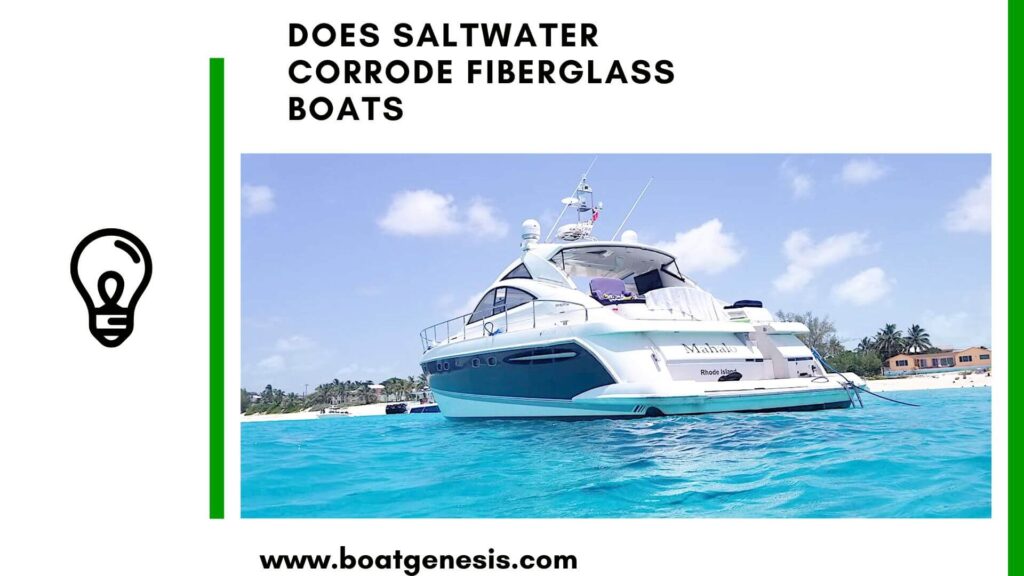Can a fiberglass boat sink? The short answer is yes, fiberglass boats can sink if they take on enough water. However, due to the materials used in their construction and the principles of buoyancy and displacement, fiberglass boats are generally less likely to sink completely compared to boats made from other materials.
Understanding Buoyancy and Displacement

To understand why fiberglass boats can still float even when damaged, it’s important to grasp the concepts of buoyancy and displacement. Buoyancy is the upward force exerted by a fluid on an object immersed in it, while displacement refers to the volume of water an object pushes aside when it’s submerged.
When a fiberglass boat is placed in water, it displaces a volume of water equal to its own weight.
This displaced water provides an upward buoyant force that counteracts the boat’s weight, allowing it to float.
As long as the boat’s weight is less than the weight of the water it displaces, it will remain afloat.
The Role of Fiberglass in Boat Flotation

Fiberglass itself is denser than water, which means that a solid piece of fiberglass would sink. However, fiberglass boats are constructed with a combination of materials that make them less dense overall:
- Fiberglass reinforced plastic (FRP): This composite material consists of glass fibers embedded in a polymer matrix, typically polyester or vinylester resin. The resin helps distribute the load across the fibers, creating a strong yet lightweight structure.
- Core materials: Many fiberglass boats incorporate lightweight core materials like balsa wood, foam, or honeycomb structures between layers of fiberglass. These cores add strength and stiffness without significantly increasing weight.
- Air pockets: The design of a fiberglass boat often includes sealed air pockets or compartments that provide additional buoyancy. These pockets trap air, which is much less dense than water, helping the boat stay afloat.
What Happens When a Fiberglass Boat is Damaged?

If a fiberglass boat sustains damage that allows water to enter the hull, it may start to sink. However, the rate at which it sinks depends on several factors:
- The extent of the damage: Small cracks or holes may let in water slowly, giving the crew time to identify and address the issue. Large breaches can lead to rapid flooding and sinking.
- The boat’s design: Some fiberglass boats have multiple sealed compartments that can help prevent complete sinking even if one area is compromised. Others may have less effective compartmentalization.
- The boat’s loading: A heavily loaded boat will sit lower in the water, making it more susceptible to flooding if damaged.
==>> Also read: How to check a fiberglass boat for leaks?
If a fiberglass boat does start to take on water, it’s crucial to identify and address the source of the leak as quickly as possible. Bilge pumps can help remove water from the hull, but they may not be able to keep up with a rapidly flooding boat.
The Aftermath of a Sinking Boat
When your fiberglass boat sinks, it’s not just the initial loss, but the subsequent salvage and disposal that pose significant challenges. You must navigate through complex procedures and consider the environmental implications of the sinking.
Salvage and Recovery Processes
First Steps and Considerations
- Initial Assessment: Quick determination of the boat’s condition.
- Safety Measures: Prioritize safety for the salvage crew.
Salvage Efforts
- Professional Salvage: Engage with trusted salvage operations to manage the recovery of your boat.
- Equipment Used: Cranes, divers, and flotation devices are typically employed.
Potential Outcomes
- The boat may be repaired and restored to function.
- Otherwise, it could be declared a total loss and disposed of or sold as salvage.
Environmental Considerations for Disposal
Responsible Actions
- Evaluate all options: sell, recycle, or dispose of the boat in an environmentally sound manner.
- Avoid improper disposal which can lead to water pollution and ecological damage.
Recycling and Disposal
- Elements that can be recycled should be separated and processed accordingly.
- The remaining structure must be disposed of in compliance with local regulations to mitigate environmental impact.
Maintaining Your Fiberglass Boat
To minimize the risk of your fiberglass boat sinking due to damage, it’s essential to keep it well-maintained:
- Regularly inspect the hull for cracks, blisters, or other signs of damage. Address any issues promptly to prevent them from worsening.
- Keep bilge pumps in good working order and consider installing high-water alarms to alert you to potential flooding.
- Avoid overloading your boat, as this can make it more susceptible to flooding if damaged.
- Learn proper damage control techniques and ensure that all crew members know how to respond in the event of a breach.
Final Thoughts
While fiberglass boats can sink under certain circumstances, their construction and design make them generally resilient to complete sinking.
By understanding the principles of buoyancy, displacement, and proper maintenance, you can help ensure that your fiberglass boat stays afloat for many years of enjoyable boating.




